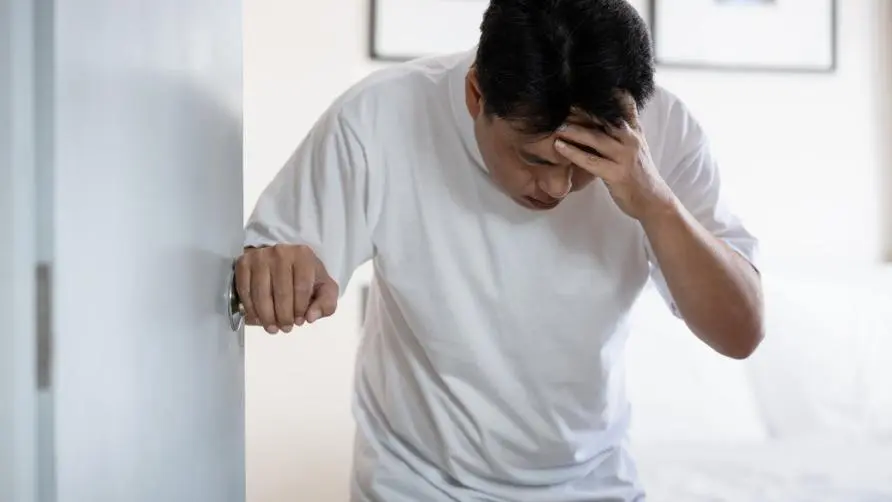Do you always feel dizzy when you stand up from a chair? Experts warn: Seek medical attention immediately if relief persists for more than 3 minutes

Do you always feel dizzy when you stand up from a chair? 5 common causes of postural hypotension
Do you always feel dizzy or even “dark” when you get up from a chair, and it always takes a few minutes to return to normal? Be careful, it may be a warning sign that something is wrong with your physical condition! Stephen Juraschek, a medical expert at Beth Israel Deaconess Medical Center in the United States, said that when the human body stands up, about 300-800 c.c. of blood will flow to the legs, so it is normal to occasionally experience fainting and body imbalance.
However, for people who are temporarily dehydrated, or who have had heart problems, endocrine problems, neurological diseases, etc. in the past, the above-mentioned “postural hypotension” (also known as orthostatic hypotension) may last longer. In addition, if you are taking blood pressure-lowering drugs such as beta-receptor blockers, or the elderly are prone to postural hypotension after eating.
Do I need to seek medical attention if I feel dizzy for more than 3 minutes? Risk factors for postural hypotension
Juraschek said that risk factors for postural hypotension include aging, bedridden people, alcohol, drugs (diuretics, A or B blockers, calcium channel blockers, angiotensin-converting enzyme inhibitors, nitric acid Salt, etc.). If postural hypotension takes more than 3 minutes to subside, you may need to seek further medical attention to clarify your physical condition.
“Transient dizziness is different from chronic postural hypotension. Certain groups of people will experience long-term loss of vision or balance after standing, which may lead to falls, fainting, or car accidents while driving.” Juraschek pointed out that certain diseases such as low heart rate (heart rate) Hypotension), hypoglycemia and thyroid disease, heart valve problems, diabetes, etc., may all cause severe postural hypotension.
Juraschek explained that chronic postural hypotension can be divided into “secondary” and “primary”. Secondary is caused by the above diseases or aging; primary is relatively rare and is caused by autonomic nervous system. Caused by systemic damage or disease, such as Parkinson’s disease. If postural hypotension is not relieved, it is more likely to cause complications such as falls, cardiovascular disease, or cerebral hemorrhage.
Would eating smaller meals more frequently and wearing compression stockings help? Experts reveal 8 tips to prevent postural hypotension
As for how to improve postural hypotension? Mayo Clinic in the United States states that the following measures can initially control or prevent postural hypotension:
Wear waist-length compression stockings. Compression stockings can help improve blood flow and reduce symptoms of orthostatic hypotension. Patients can wear it during the day and take it off while sleeping or lying down.
Get plenty of fluids. Staying hydrated can help prevent symptoms of low blood pressure, and you should drink enough fluids before standing for long periods of time or doing any activity that may trigger symptoms.
Avoid alcohol. Alcohol can worsen postural hypotension, so limit the amount you drink or avoid it altogether.
Add more salt to your diet. This must be done with caution and only after discussing it with a physician or nutritionist, as too much salt can cause an increase in blood pressure.
Eat small, frequent meals. If your blood pressure drops after eating, eating small, frequent, low-carbohydrate meals may help.
Exercise moderately. Regular cardiorespiratory exercise may help reduce the symptoms of orthostatic hypotension.
Stretch briefly when you stand up. Before getting up from the chair, you can moderately stretch your calf muscles, or slightly massage your thigh, abdominal and buttock muscles. Squatting, standing still or standing on tiptoes in advance can also be helpful.
Get up slowly. Slowly move from a sitting/lying position to a standing position. In addition, when you get up in the morning, you can sit by the bed for 1 minute before standing up.
Miaoyou Clinic pointed out that the treatment of postural hypotension emphasizes finding the source of the disease rather than the hypotension itself. Postural hypotension due to dehydration, for example, may require the patient to take in extra fluids throughout the day. However, if postural hypotension does not improve with lifestyle modifications, medication may be needed to increase blood pressure or blood volume. The type of medication depends on the type of postural hypotension.
Finally, Juraschek reminded the public that if postural hypotension occurs frequently and always lasts for more than 3 minutes, it may be an unknown problem in the cardiovascular or nervous system. At this time, you should seek medical treatment as soon as possible to find out the cause of postural hypotension. , to prevent the deterioration of the condition from affecting daily life.
Source:
Orthostatic hypotension (postural hypotension)
A Brief Review on the Pathological Role of Decreased Blood Flow Affected in Retinitis Pigmentosa
Further reading:





